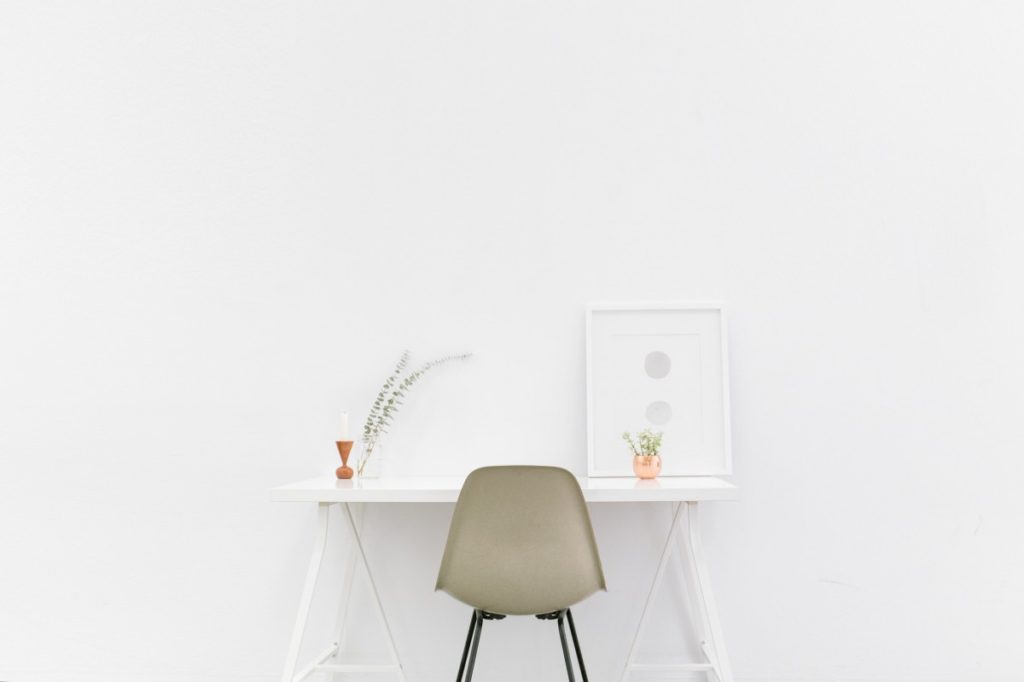The minimalist look has regained popularity in recent years and what’s possibly making it so coveted is that practically anyone can pull it off and make their interior look untouched, well-curated and sophisticated. Minimalist aesthetics has a lot to offer, from clean, simple lines, elegant colour schemes, statement furniture pieces to proper functionality. With this in mind, here’s how to create a minimalist interior design masterpiece.
Neutral colour palette
Minimalist interiors aim at creating a simple and clean look so the colour palette is a perfect tool to achieve that goal. In most cases, minimalist spaces favour a monochromatic palette which may appear to some people as too cold and stark. If you have a vision of a warmer interior, feel free to branch out into more vivid shades.
When you’re designing your space relying entirely on a neutral palette, it’s essential you add more variety so the room doesn’t end up looking boring and bland. To achieve this, abide by 60/30/10 rule – pick one shade as the dominant base, another as a secondary colour and a rich third nuance that will infuse the space with energy and spark.
Deliberate furniture choices
In a minimalist interior, furniture plays the main role as rooms are designed around them so they become a focal point. To make it all function, allow for plenty of negative space. Let the eye be drawn to the furniture as the prominent feature of the room. As such, the pieces you choose should be worthwhile, so invest a bit more into higher quality items that will carry the aesthetics of the whole design. Opt for statement pieces with simple, clean lines and natural materials.
A variety of textures
Since there will only be a minimal number of design elements, it’s important they all have both aesthetic and functional value. In terms of looks, minimalist interiors need sufficient variety to add interest to the space and this is where texture plays a crucial role.
Texture has the power to add visual definition and weight to every item and tie elements into a well-composed unity. For instance, a soft, plush rug plays well with a smooth, hard surface of a wooden coffee table. In designing interiors, it’s the texture that allows you to add contrast and impact wherever you feel necessary to make the space function. As the lecturers behind this new bachelor of arts in interior design nicely explain, design is not just a way to reinvent and improve the material side of life, but it also teaches you how to bring both small and great together using invisible connections. It teaches you responsibility, commitment but also the art of change.
Refined accessories
A common misconception about minimalist design is that it eliminates all accessories from its aesthetics but in fact, they are a critical ingredient that anchors the entire design. There’s a risk with minimalist space that they can appear unfinished so with the addition of a few, refined and well-placed accessories, the space gets its finishing touches and full definition.
Accessories that also have a functional value work best here so think in terms of blankets, candles, lamps and coffee table books. Furthermore, placement is important. Look for surfaces that would appear too bare without a decorative element, such as side tables, bookshelves and dining tables. Once you’ve placed the objects, take a step back to see if what the overall feel is – if something feels too much, don’t hesitate to change its position or remove it entirely.
Clever storage solutions
Regardless of the style you prefer, lived-in spaces need to be functional and provide room for all the belongings. Minimalist spaces are no exception with the only difference being how they’re displayed. What works best here is hidden, inconspicuous storage that allows you to maintain the minimalist look and still keep the clutter of day-to-day living at bay. It may require you to add a few more pieces of furniture to accommodate for all the possessions, but as long as they’re contained, the space will preserve its minimalist elegance.
Minimalist décor has a strong appeal with its simplicity, elegance, clean lines and pared-down silhouettes. Some people might consider it impractical for everyday use, but with tips listed here, you can create a warm, cosy, layered look that is comfortable and inviting and makes the space both functional and aesthetically appealing.


